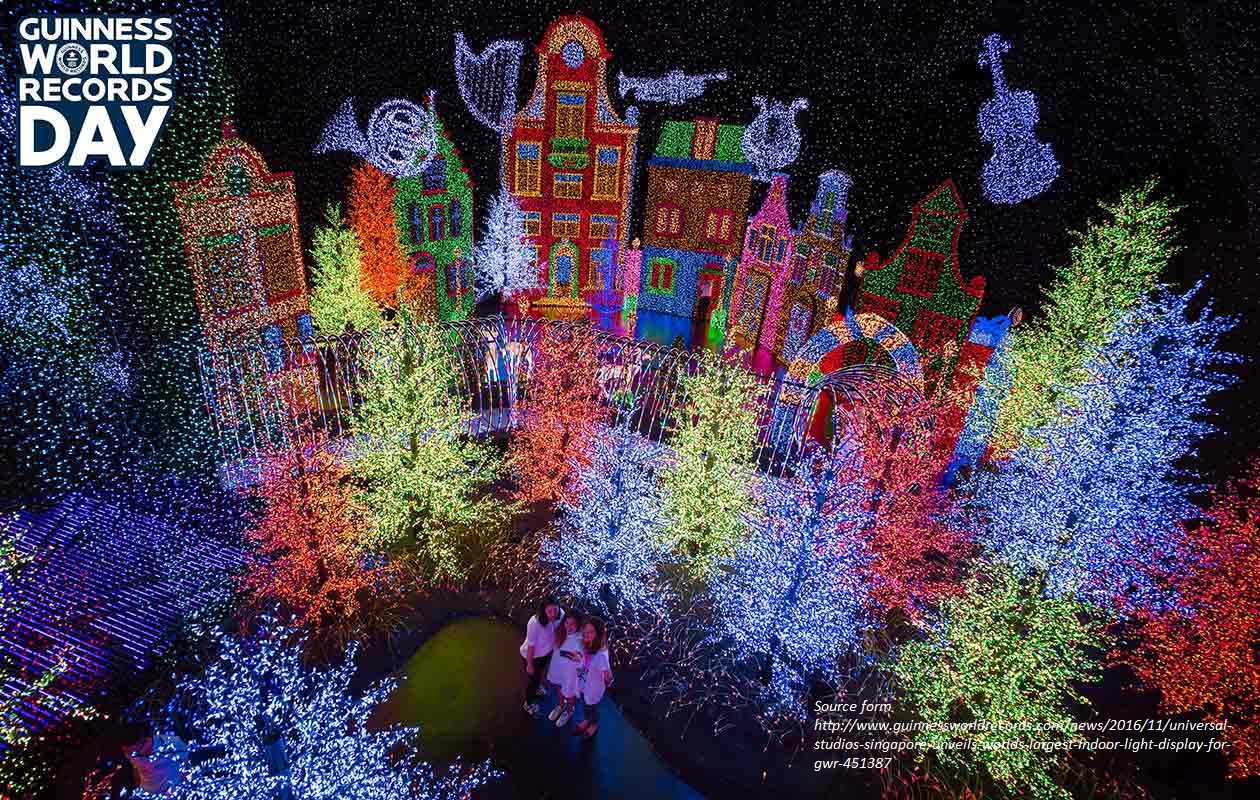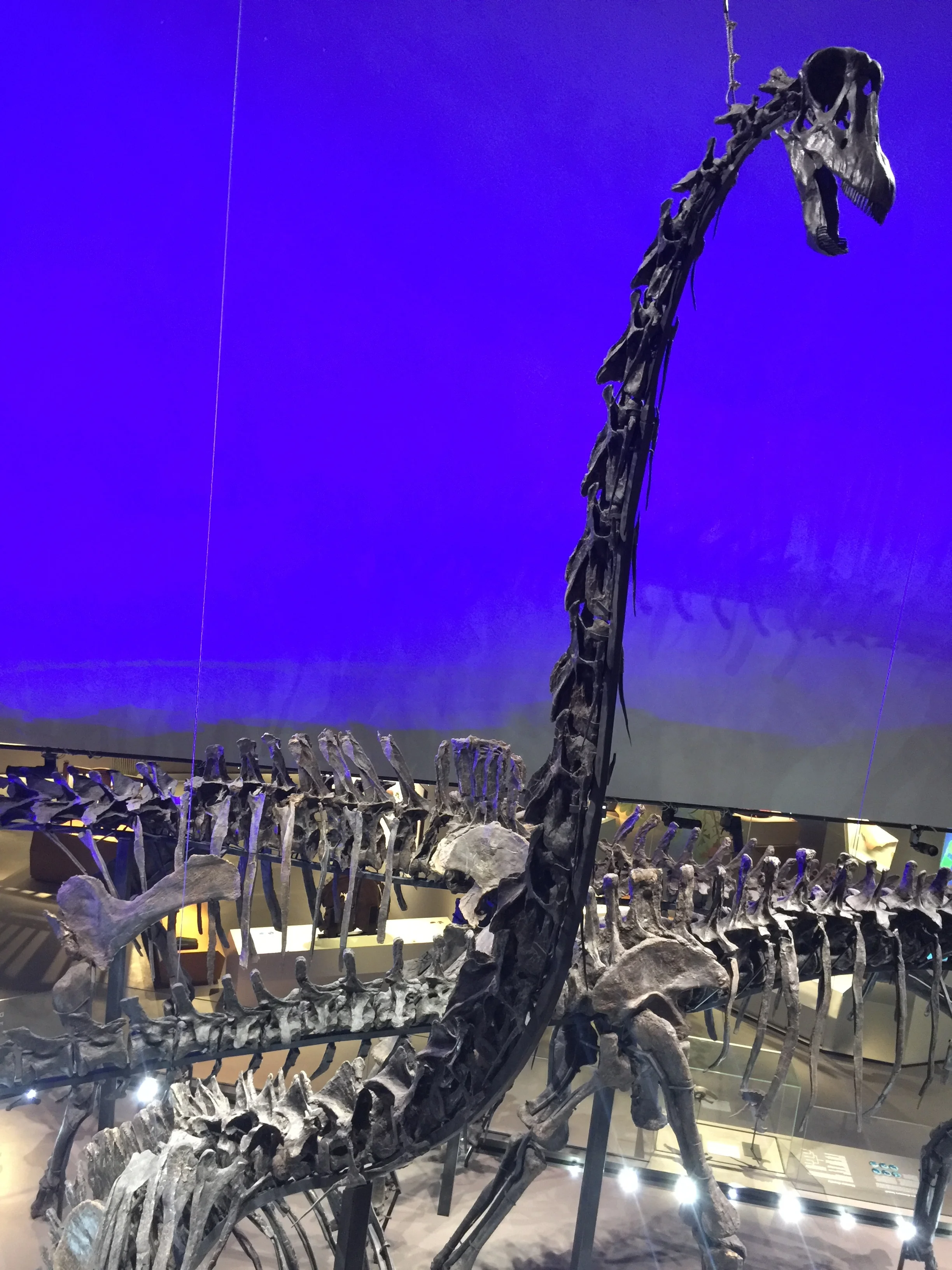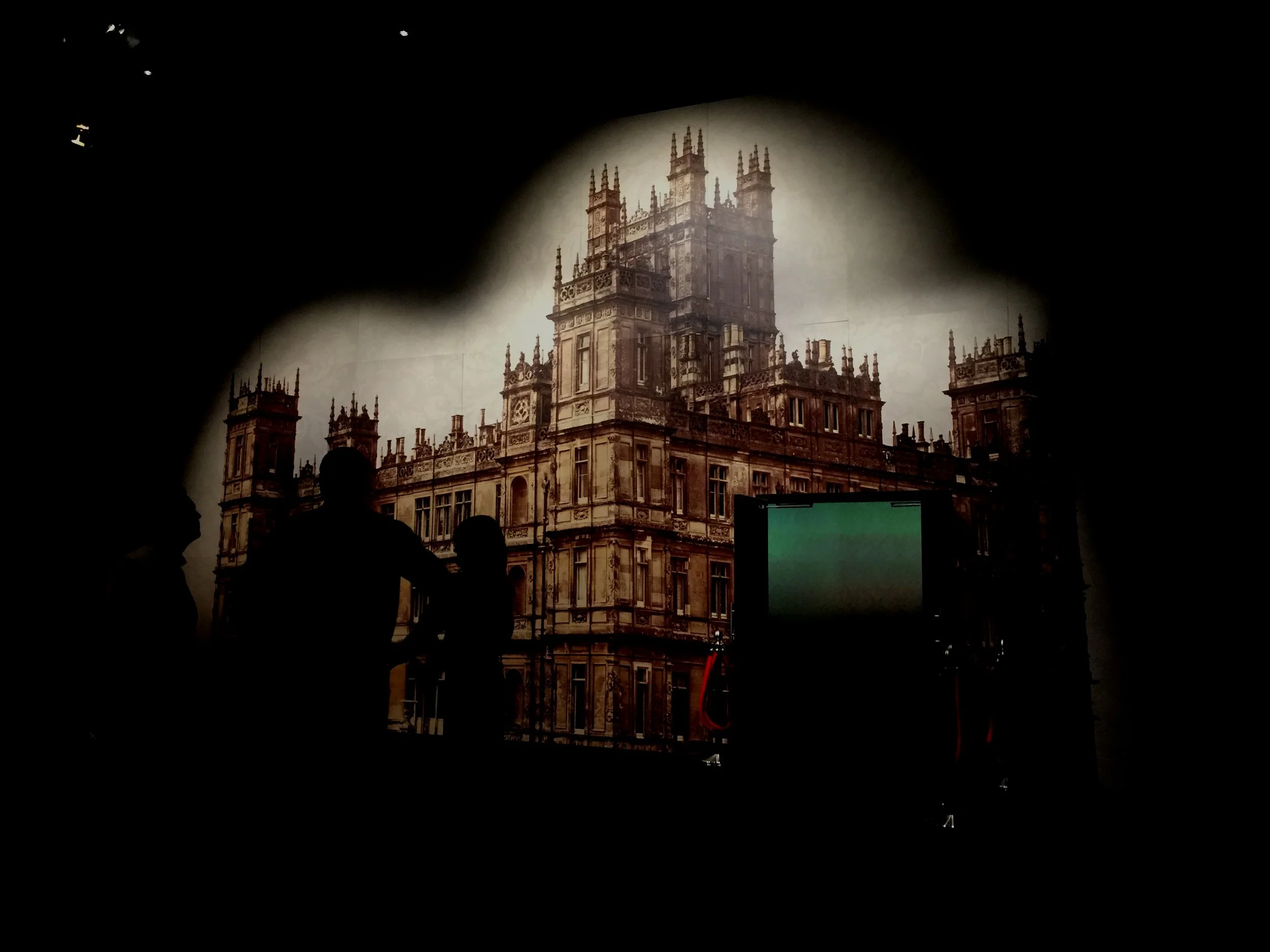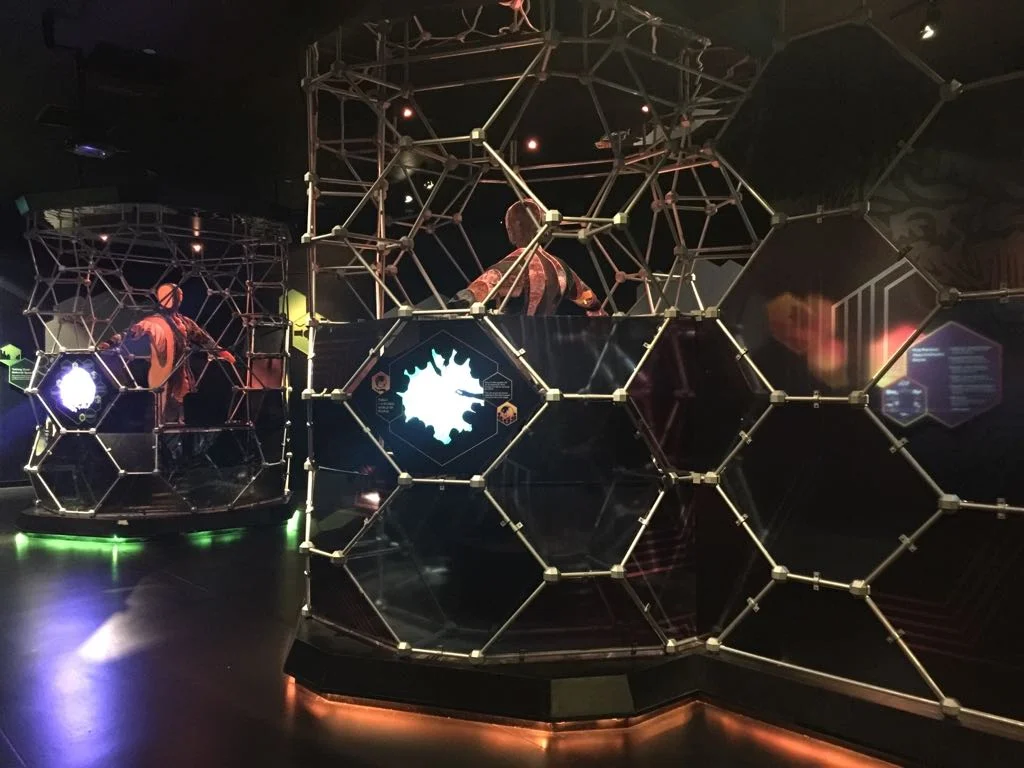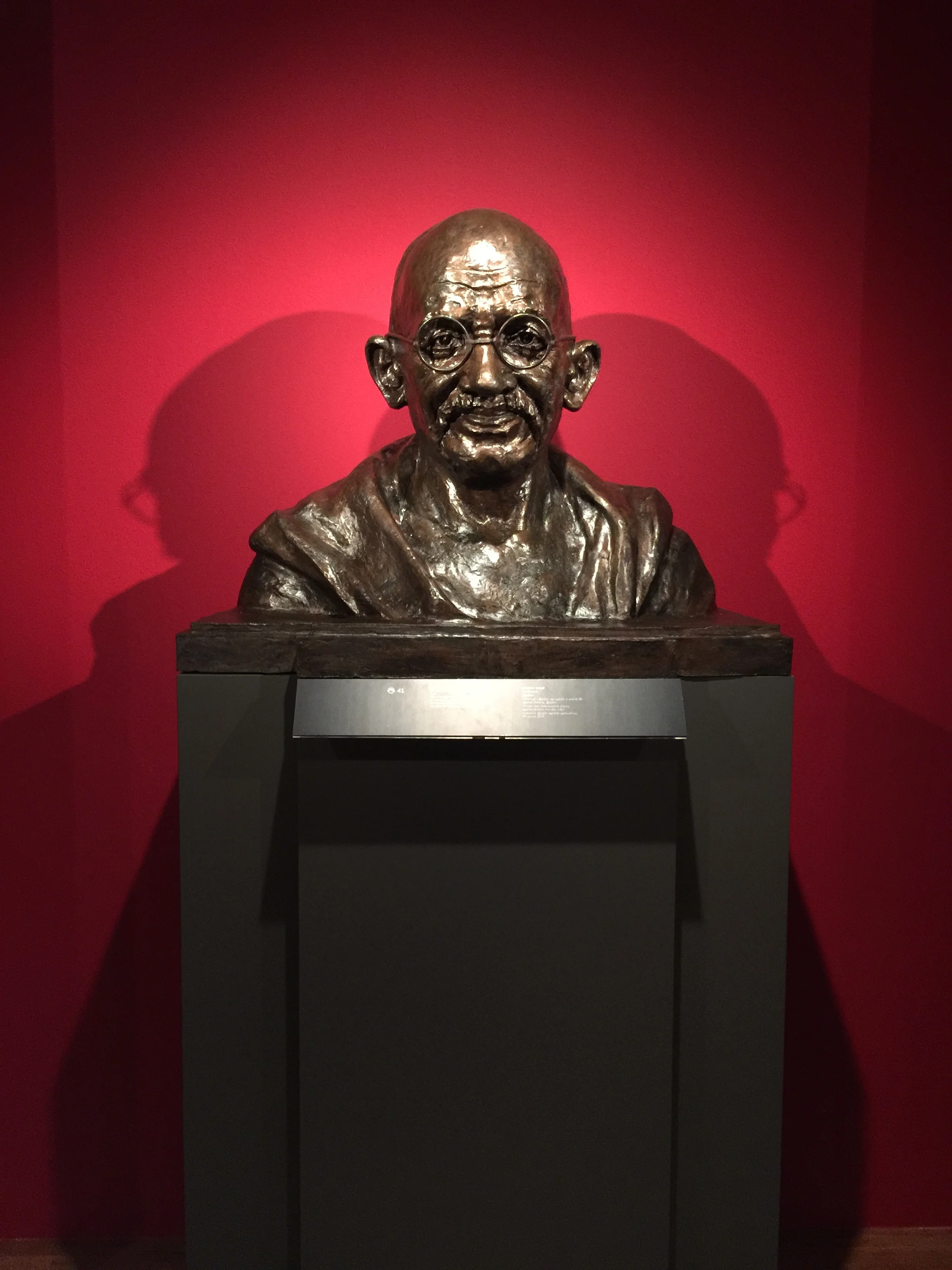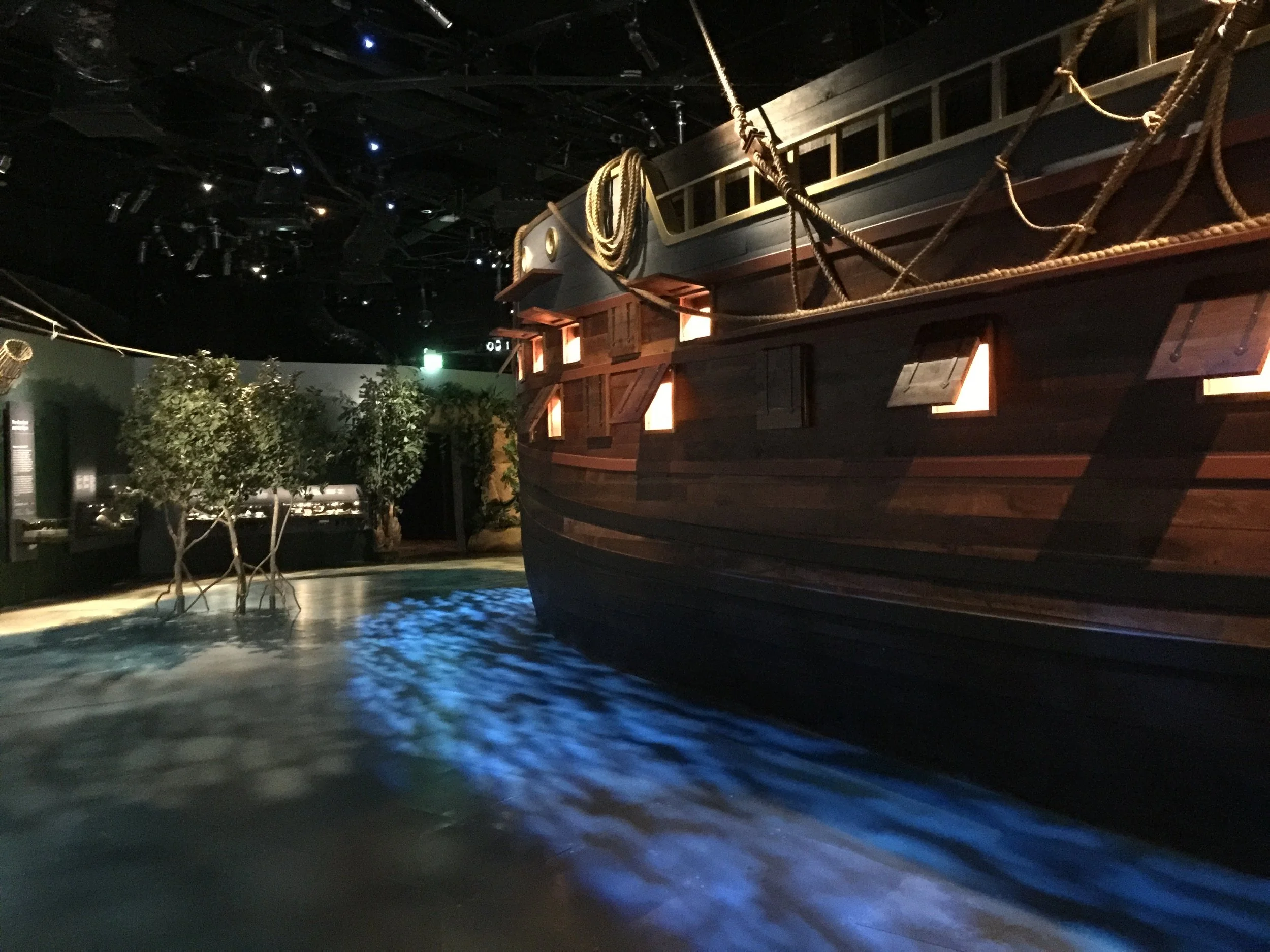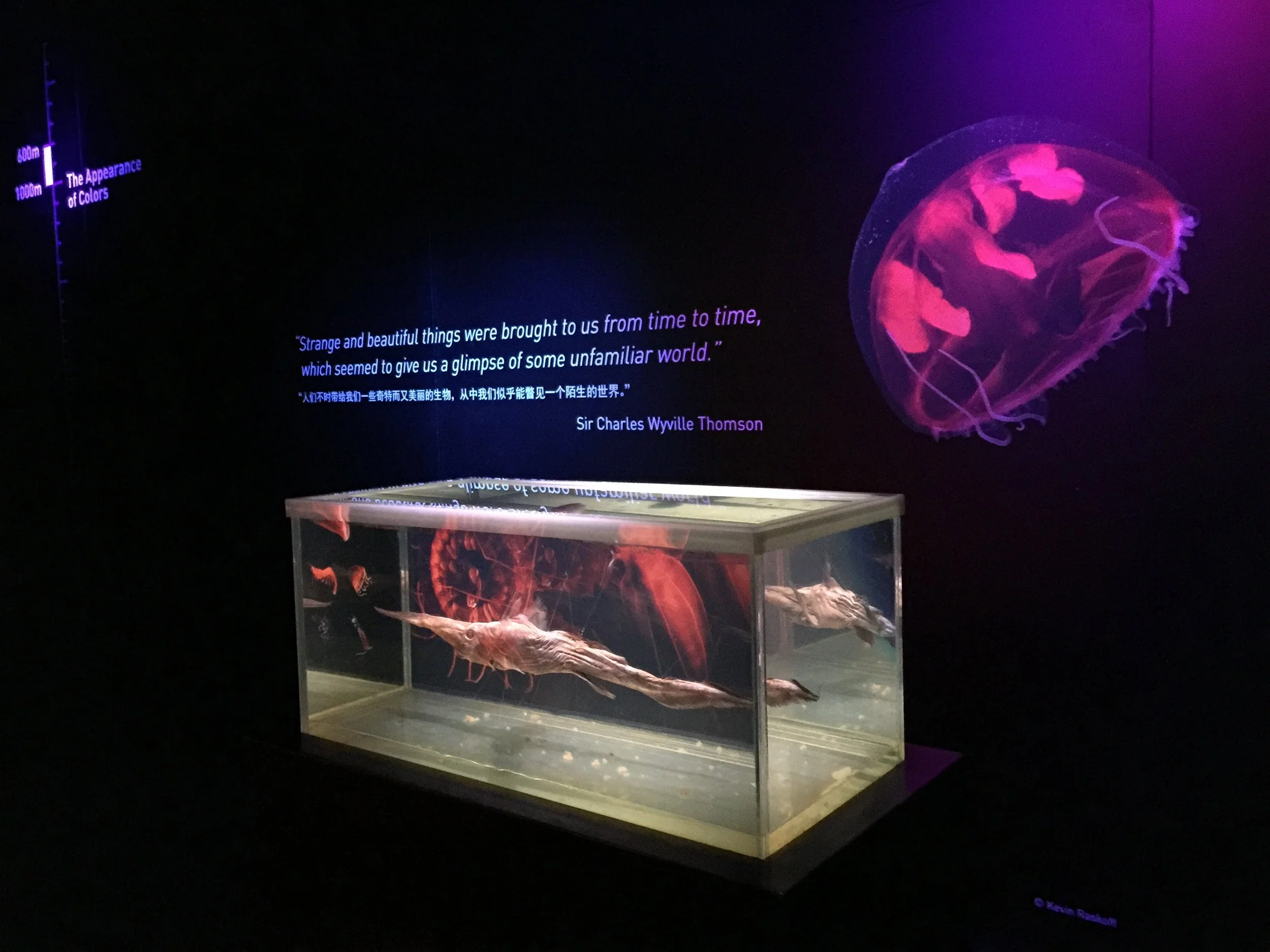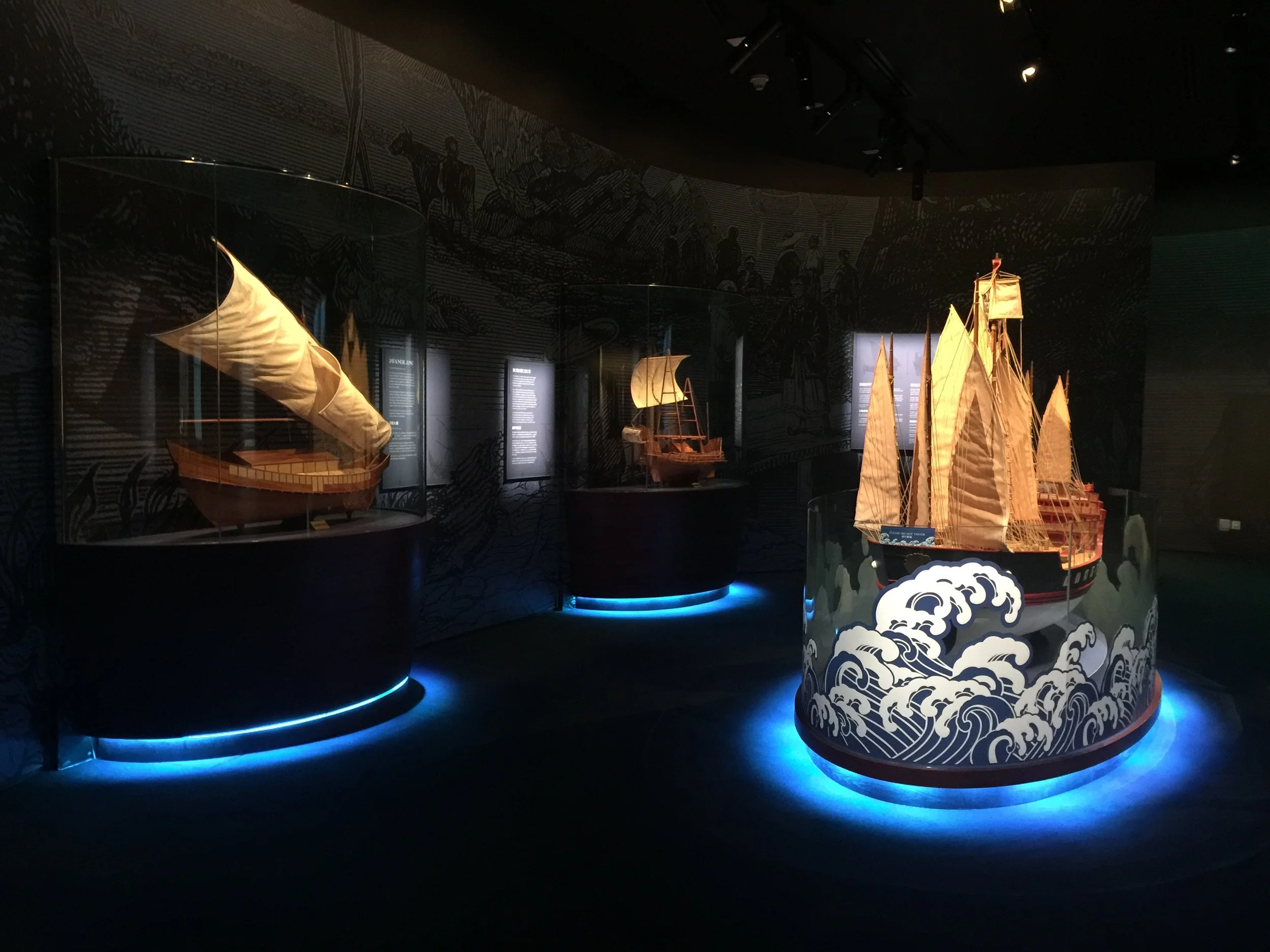Changi Experience Studio
Changi Experience Studio at Jewel is an attraction that tells the story of Changi Airport in fun and interactive ways. Found on Level 4 of Jewel Changi Airport, Changi Experience Studio will bring you on a interactive journey through Singapore’s iconic airport using new and novel experiences. Occupying a total floor space of 3,000 square meters, the Changi Experience Studio uses different types of technology to showcase various facets of Changi Airport. Experiences range from interactive arcade games, projection storytelling, immersive shows to gallery exhibits.
Work Involved: Lighting and Control System Design and Lighting Network Configuration with value engineering, Installation, T&C, Focusing, Programming and Lighting and AV Network interactive.
Surviving The Japanese Occupation War and Its Legacies
This is a permanent World War Two exhibition presented by the National Archives of Singapore at the historic Former Ford Factory. This was the place where the British forces surrendered unconditionally to the Imperial Japanese Army on 15 February 1942. The exhibition presents the events and memories surrounding the British surrender, the Japanese Occupation of Singapore, and the legacies of the war. Through oral history accounts, archival records and published materials, the exhibition highlights the diverse experiences of people in Singapore during this crucial time in the history. (Source from http://www.nas.gov.sg/formerfordfactory/exhibition)
Work Involved: Gallery Lighting and Control System Design and Configuration, Integration of Electrical, Lighting, Fibre Optic and Control Equipment including Programming and Focusing.
Dinosaurs: From Dawn to Extinction
Journey through 600 million years in a never-before-seen exhibition.
Get transported back to the Precambrian, Triassic, Jurassic and Cretaceous prehistoric periods in the first exhibition of its kind, and relive the dinosaurs' natural environment as you uncover how the different species lived on earth. With hundreds of remarkable fossils and specimens, and original vivid illustrations reconstructing appearances of the extinct species, gain deeper insight into the rich and fascinating world of dinosaurs through the collaborative efforts of skilled artists and scientists.
This exhibit is the largest dinosaur exhibition in Southeast Asia with over 3,700 square meters of floor space. The Dinosaurs: Dawn to Extinction features more than 400 fossils and models, and over 50 original artworks. The exhibition sheds light on how dinosaurs lived on earth and also serves as a window into the past where visitors will have the opportunity to immerse themselves in this prehistoric world. (Source from http://www.marinabaysands.com/museum/exhibition-archive/dinosaurs-dawn-to-extinction.html#S62jrmswDR0KyTMG.97
Work Involved: Lighting Design, Lighting and electrical Integration, Focusing and Programming
Guinness World Records - Largest light bulb display (indoors)
Universal Studios Singapore in Resorts World Sentosa, Singapore has marked the occasion by unveiling the world’s Largest lightbulb display in an indoor venue. The breath-taking display consisting of 824,961 individual bulbs is the showpiece of the attraction’s Universal Journey – a spectacular experience created for the Christmas season which gives visitors the opportunity to adventure through eight differently-themed zones. The record-breaking light display took two months to construct. (Source form http://www.guinnessworldrecords.com/news/2016/11/universal-studios-singapore-unveils-worlds-largest-indoor-light-display-for-gwr-451387)
Work Involved: Controllable LED Lighting System Design and Configuration, Integration of Electrical, Lighting and Control Equipment including Programming.
Treasures of the natural world
Embark on an adventure of discovery as treasures of the natural world from the prestigious Natural History Museum London come alive to take you back in time on expeditions that broke scientific grounds and made history.
ArtScience Museum brings the very best from the museum’s rich and important collection in this hotly anticipated exhibition that showcases the most significant treasures of the natural world. Hand-picked from over 80 million specimens, over 200 of the museum’s star objects will travel to Southeast Asia for the very first time. Selected for their historical and scientific importance, each prized treasure is a marvel that reveals a story of adventure and exploration defined by curiosity and discovery. Featured in this exhibition are scientific specimens and animals from the natural world, boasting a rich record of nature, works of art, gems and minerals, and the manuscript and collection belonging to some of the world's greatest scientists, including both Charles Darwin and Alfred Russell Wallace, discoverers of evolutionary biology as we know it today.
The Natural History Museum in London is the custodian of one of the most scientifically significant natural history collections in the world. One of Britain’s most beloved civic institutions, the Museum looks after a wealth of objects that have helped scientists re-interpret our own existence and relationship to the natural world. The value of these treasured objects goes far beyond their price. Together, they have the potential to unlock answers to the mysteries of the past and the biggest questions our species and our planet might face in the future.
(Source from: http://www.marinabaysands.com/
museum/treasures.html#eLUqZXV35dld35SG.97)
Work Involved: Lighting Design, showcase lighting and electrical Integration, Focusing and Programming.
Witness to War: Remembering 1942
75 years after the fall of Singapore, rediscover this watershed event through a special international exhibition at the National Museum of Singapore. Hear first-hand accounts from witnesses to war: ordinary men and women whose lives were upheaved by the outbreak of hostilities in Singapore in 1942. The exhibition presents the complexities of the events that led to the fall of Singapore, paying homage to the extraordinary tenacity with which these men and women bore their circumstances.
Featuring artefacts from 10 overseas museums and institutions, Witness to War will also explore how Singapore’s fall was part of a wider campaign waged by the Japanese Empire across the Pacific.
The exhibition will also feature two special artworks by Australian artist Angela Tiatia and Singaporean artist Debbie Ding. They were developed as part of the first Australia-Singapore Joint Artist Residency exchange programme, which saw the artists participate in one-month residences at the Australian War Memorial and the National Museum of Singapore. The artworks are intimate, evocative responses to Singapore and Australia’s shared World War Two history, and will be displayed outside the exhibition galleries. (Source From: http://www.nhb.gov.sg/nms2017home/our-exhibitions/exhibition-list/witness-to-war-remembering-1942?sc_lang=en)
Work Involved: Gallery, showcase and Show Lighting Integration, Focusing and programming
T4
T4 is built on a plot of land that was originally occupied by the Budget Terminal, which was demolished on 25 September 2012 to make way for a new, larger, full-service passenger building (T4) that will cater to Changi Airport's growing traffic occupies about 225,000m2, which is about the size of 27 football fields. It is about half the physical size of Terminal 3 but has a capacity that is two-thirds.
With a spacious and transparent terminal interior allows well-wishers to see your loved ones all the way to the boarding gates and redefine passengers’ travel experience, enhance operational efficiency and raise productivity through the extensive use of technology featuring an extensive roll-out of end-to-end self-service options at check-in, bag-drop, departure immigration and boarding.
T4 will serve both full-service and low cost carriers, and have an annual passenger movement capacity of 16 million, equivalent to the population of Norway, Denmark and Finland, combined. This would bring Changi Airport's total passenger capacity to 82 million per annum.
T4 brings you a new experience with a rich tapestry of culture and technology theatre performances, heritage-themed façades, immersive LED displays, Peranakan gallery, moving art and sculptures embody the spirit of dynamism, originality and connection are installed in prominent locations in the departure and arrival levels.
(Source from: http://t4.changiairport.com)
Work Involved: Onsite Lighting Design, Lighting and electrical Integration, Focusing and Programming for Peranakan Gallery and "Swimming" Steel Scrupture.
Lee Kong Chian Natural History Museum
With over 2,000 natural history specimens on display, experience the amazing stories of nature in Southeast Asia!
BIODIVERSITY GALLERY
Discover the diverse groups of life forms on Earth over 15 zones, each zone representing the major branches of the Tree of Life with a strong focus on Southeast Asian flora and fauna. Immerse yourself in the soundscapes of bird calls and chirping frogs, wonder at the wide variety of adaptations displayed by different organisms and explore the diversity of life on Earth.
DINOSAURS
The museum’s three diplodocid sauropod fossils were among the largest and heaviest animals to ever walk on land. More than 80% complete, of which two of these skeletons come with skulls – a rarity as far as sauropod dinosaurs fossils are concerned! Found between 2007 and 2010 in a quarry in a small town of Ten Sleep in the United States, they are believed to be part of a herd or even a family.
SINGAPORE SPERM WHALE
On 10 July 2015, a 10.6 metre long female sperm whale (Physeter macrocephalus) was found dead off Jurong Island. The first record of a sperm whale in Singapore, a team from the museum worked quickly to study and salvage this specimen and it is now on display in the Mammal Zone of the museum.
SLICE OF THE CHANGI TREE
Hopea sangal, locally known as ‘chengal pasir’, is a rare species of dipterocarp reputed to be the tree that gave Changi its name. Thought to be locally extinct, the lone specimen was discovered in 2002, but illegally felled that same year.
NEPTUNE’S CUP SPONGE
First described from Singapore in 1820, Neptune’s Cup Sponge (Cliona patera) were highly sought after for their scientific and commercial value. This resulted in over-harvesting and they were thought to have gone extinct globally for over a century until it was rediscovered in 2011 from the waters off Singapore’s southern shores.
HERITAGE GALLERY
Delve into the nostalgic past of the museum’s history in the Heritage Gallery. Our natural history collection goes way back into the late 1800s and early 1900s, where it was once part of the former Raffles Library and Museum (now National Museum of Singapore). Learn more about the history of the collection and marvel at some of the specimens that were displayed at the old Raffles Museum.
LEATHERBACK TURTLE
The leatherback turtle (Dermochelys coriacea) specimen in the Heritage Gallery is one of the museum’s greatest treasures. More than a century have passed since this specimen was found dead on the beach near Siglap in 1883 by Malay villagers, but it still remains the only known record of a leatherback turtle in Singapore.
SUNDA PANGOLIN
The Sunda pangolin (Manis javanica) is a mammal with ‘scales’ covering its body that is made of keratin, the same protein that is in our skin and hair! Globally endangered, they are hunted for their meat and scales, the latter of which is (baselessly) thought to have medicinal properties.
(Source from: https://lkcnhm.nus.edu.sg/about/museum-highlights/)
Work Involved: Gallery Lighting and Control System Integration, Focusing and Programming
Singapore Art Museum
The Singapore Art Museum focuses on international contemporary art practices, specialising in Singapore and Southeast Asia.
Housed in a restored 19th century mission school, it opened its doors in 1996 as the first art museum in Singapore. Also known as SAM, the museum is now a contemporary art museum.
SAM has built one of the world's most important public collections of Southeast Asian contemporary artworks, with a growing component in international contemporary art. SAM draws from its collection and collaborates with international contemporary art museums to co-curate and present contemporary art exhibitions. Contemporary art of the region is also given international exposure through SAM's travelling exhibition programme and collection loans.
Visitors can extend their SAM experience through complementary and exhibition-related education and public programmes such as:
- exhibition-related public programmes and workshops
- educational programmes and workshops which cover a diversity of art trends and contemporary art practices for all ages
- outreach programmes where SAM programmes are extended outside of the museum to schools, community centres, and partner locations
- SAM exhibition downloadable activity sheets for pre-schoolers, primary, secondary and tertiary level students
(Source from: https://www.singaporeartmuseum.sg/about/index.html)
Work Involved in General: Onsite Lighting Design, Lighting and electrical Integration, Focusing and Programming
NTU Centre for Contemporary Art Singapore
Located in Gillman Barracks, the NTU Centre for Contemporary Art Singapore (NTU CCA Singapore) is a national research centre of Nanyang Technological University and is supported by a grant from the Economic Development Board, Singapore. The Centre is unique in its threefold constellation ofexhibitions, residencies, research and academic education, engaging in knowledge production and dissemination. The NTU CCA Singapore positions itself as a space for critical discourse and encourages new ways of thinking about Spaces of the Curatorial in Southeast Asia and beyond. The Centre’s dynamic public programmes serve to engage with various audiences through lectures, workshops, open studios, film screenings, Exhibition (de)Tours andStagings. As a research centre, it aims to provide visiting researchers and curators a comprehensive study on the contemporary art ecosystem in Singapore and the region.
Since the Centre’s inauguration in October 2013, the NTU CCA Singapore has featured leading artists presenting their work for the first time in Southeast Asia, making it one of the few spaces in Singapore to present contemporary art from around the globe. The Centre’s residencies programme is dedicated to facilitate the production of knowledge and research, engaging and connecting artists, curators and researchers from Singapore, Southeast Asia, and beyond, across various disciplines. The Centre’s seven studios support the artistic process in the most direct way – by giving the time and locale to be fully engaged, and the access to an interesting and immersive context to further the space for developing ideas. The Centre’s Artist Resource Platform contains visual material and audio recordings of talks from over 90 Singapore based artists, NTU CCA Singapore’s Artists-in-Residence, and independent art spaces in Singapore. This archive provides local and visiting curators, scholars, and writers, as well as an interested public, a point of entry to contemporary artistic practice.
(Source from: http://ntu.ccasingapore.org/about/)
Work Involved in General: Onsite Lighting Design, Lighting and electrical Integration, Focusing and Programming
Downton Abbey: The Exhibition
The award-winning series may be over, but fans of the hit British period drama Downton Abbey will have a chance to relive the moment and get a peek at the lives of the lavish Crawleys and their not-so-lavish servants at a new exhibition at Marina Bay Sands.
The interactive Downton Abbey: The Exhibition at Sands Expo and Convention Centre, will feature some of the iconic sets and a host of costumes and props from the show created by Oscar-winning writer Julian Fellowes. It starred the likes of Maggie Smith as Violet Crawley, Dowager Countess of Grantham, Jim Carter, who played the butler Carson, and Michelle Dockery, who became known for her role as Lady Mary Crawley.
The touring exhibition is making its world premiere in Singapore, and some of the cast members as well as creator Fellowes will be gracing a red carpet event at its official opening. The show’s executive producer, Liz Trubridge, revealed that one of her most prized possessions was the award for Best Foreign TV Series from this year’s Shanghai International Film and TV Festival.
In fact, Downton Abbey has been cited as one of the reasons for the current trend among China’s elite to hire butlers. First aired in 2010, the show ran for six seasons until last year. During its run, it collected accolades from the Golden Globes and the Emmys. It has been sold to 250 countries and is considered the most internationally successful British drama in recent decades.
Downton Abbey revolves around the lives of an aristocratic family and its servants living in a fictional country estate in Yorkshire during the early 20th century. The personal stories are framed by the many historical and social events that took place during that time, including the sinking of the Titanic and World War I.
The exhibition will feature detailed, recreated sets from the series, including the servants’ hall, the workplace kitchen, and the Crawleys’ dining room. Among the interactive elements is a section where visitors can “apply” for a job as one of the servants at the estate, while the exhibition gift shop includes not only merchandise but also a cafe where one can have some afternoon high tea.
Also on display are props that depict the changes that took place at that time, including the introduction of electricity and telephones. And then there are the elaborate costumes from the 1920s, which have been one of Downton Abbey’s biggest draws.
(Source from: https://www.channelnewsasia.com/news/lifestyle/downton-abbey-exhibition-makes-its-world-premiere-in-singapore-8951432)
Work Involved: Supplied and build Exhibition Show Lighting and Control System, Integration of Electrical and Control Equipment including Programming and Focusing.
ADM Gallery
The ADM Gallery is housed within the School of Art, Design and Media, an iconic and prize winning, environmentally friendly building, located at the heart of Nanyang Technological University campus in Singapore. ADM Gallery presents exhibitions of original works of art by professional, practicing artists and designers from Singapore, Southeast Asia and beyond the region. Featuring traditional works of art as well as advanced contemporary media art, ADM Gallery exhibitions and its related programs support the teaching, research, and creative aspects across the School’s six majors: Digital Animation, Digital Filmmaking, Interactive Media, Photography and Digital Imaging, Product Design and Visual Communication.
(Source from: http://www.adm.ntu.edu.sg)
Work Involved in General: Onsite Lighting Design, Focusing and Programming
Marvel Studios: Ten Years of Heroes
Enter the Marvel Cinematic Universe at this highly-immersive Marvel Studios 10th anniversary exhibition that will present a unique opportunity to experience the world of Marvel Super Heroes.
Experience epic storytelling as you wander the inner sanctums of Stark Tower, travel via the Bifrost, see the spectacular sights of Wakanda, traverse Doctor Strange’s light portal, see the world through the eyes of Ant-Man and the Wasp, and more! Celebrating 10 years and 20 films, Marvel Studios: Ten Years of Heroes is a cutting-edge exhibition that utilises state-of-the-art AV technology and immersive media to transport you into the dynamic Marvel Cinematic Universe.
The first decade's only the beginning.
(Source from: https://www.marinabaysands.com/museum/marvel-exhibition.html#WsleD4O4kskM7UwJ.99)
Work Involved Generally: No-SIte Lighting Design, electrical Integration and Focusing
Temporary Exhibition - Lee Kong Chian Natural History Museum
Work Involved in General: Onsite Lighting Design, Lighting and electrical Integration, Focusing and Programming
Auditorium & Studio
Work Involved: Supply of Equipment, Electrical, Lighting and Control System Integration, Focusing and Programming.
National Gallery Singapore
National Gallery Singapore is a visual arts institution which oversees the largest public collection of modern art in Singapore and Southeast Asia. Situated in the heart of the Civic District, the Gallery is housed in two national monuments—City Hall and former Supreme Court—that have been beautifully restored and transformed into this exciting venue.
Reflecting Singapore’s unique heritage and geographical location, the Gallery features Singapore and Southeast Asian art from Singapore’s National Collection in its long-term and special exhibitions. The Gallery also works with international museums to jointly present Southeast Asian art in the global context, positioning Singapore as a regional and international hub for the visual arts.
In 2016, the Gallery won the awards for “Best Attraction Experience”, “Breakthrough Contribution to Tourism” and “Best Customer Service (Attractions)” at the prestigious Singapore Tourism Awards for its role in adding to the vibrancy of Singapore’s tourism landscape.
(Source from: https://www.nationalgallery.sg/about/about-the-gallery)
Work Involved Generally: Lighting Design, Integration, Focusing and Programming Direction
Fujian – An Ocean Legacy Exhibition
Presented by The Singapore Hokkien Foundation, the three-month exhibition, Fujians: The Blue Ocean Legacy, is one of the main highlights of the World Fujian Convention (WFC) and the 4th Singapore Hokkien Festival. The exhibition will showcase rare artefacts from overseas museums and from local collectors in a modern and contemporary manner. It is also the first time that Singapore Hokkien Huay Kuan is partnering with ArtScience Museum at Marina Bay Sands and overseas museums.
Being the first clan association in Singapore to organize an exhibition with ArtScience Museum at Marina Bay Sands, Singapore Hokkien Huay Kuan (SHHK) President Chua Thian Poh and Marina Bay Sands president and chief executive officer George Tanasijevich shared highlights of the unique partnership at a press briefing today. Singapore Hokkien Huay Kuan President Chua Thian Poh said, “The partnership is unique and created many firsts. Singapore Hokkien Huay Kuan is an organisation with a long heritage and history. The partnership with ArtScience Museum at Marina Bay Sands, known as a Museum of Creativity, tells the history of the Fujians in a modern and creative way.
ArtScience Museum epitomizes modernity and creativity while Singapore Hokkien Huay Kuan stands for strong roots and foundation.” The Exhibition and the partnership epitomize Singapore Hokkien Huay Kuan’s value of embracing change and challenges in order to stay relevant with the times. Singapore Hokkien Huay Kuan hopes this will put Singapore in the international heritage arena. It also marks an important milestone for clan associations. Marina Bay Sands President and Chief Executive Officer George Tanasijevich is looking forward to welcoming delegates to the convention. He said, “Marina Bay Sands is proud to partner with Singapore Hokkien Huay Kuan in helping host the 7th World Fujian Convention and share such a historically significant event with Singapore. We’re particularly pleased to welcome Fujians: The Blue Ocean Legacy and its showcase of rare and
consequential artefacts to ArtScience Museum. This exhibition provides a unique opportunity to share the important Fujian story as well as engage people of all ages at the same time. We’re honoured to showcase Fujians: The Blue Ocean Legacy to the visitors of ArtScience Museum at Marina Bay Sands.”
The exhibition will showcase 600 pieces of exhibits, including rare artefacts classified as “First Class Cultural Relics” from Quanzhou city (Fujian province, China). Amongst the highlights are Yuan Dynasty stone carvings of two Chinese fairies holding a Christian cross; and a Ming Dynasty porcelain dish with peony and phoenix designs. These exhibits with intertwining cultural elements reflect an interesting cultural diversity stemming from seafaring activities in Fujian centuries ago. Also on display are stone sculptures and carvings with interesting religious imprints; and exquisitely-crafted models of ships with which Fujian ancestors set sail to Singapore.
One of the featured local artefacts is an 1828 land title deed with a signature of Hokkien merchant and philanthropist Tan Tock Seng. The piece of land bought from British East India Company was used to build the Thian Hock Keng Temple. The well-preserved document is believed to be the oldest land title deed to be ever found in Singapore. (SOurce from: https://www.marinabaysands.com
Work Involved: Lighting Design, Integration and Focusing
Island Adventurer Exhibition
Forget the myth that evolution was discovered in the Galapagos Islands. It was actually discovered here in South East Asia! The great naturalist Alfred Russel Wallace (1823-1913) explored the Malay Archipelago (now Singapore, Indonesia and Malaysia), between 1854-1862. Through his specimen collecting and field study of the rich biodiversity here, Wallace managed to identify and solve some of the most striking puzzles of bio-geography, as well as to conceive of the theory of evolution by natural selection independently of Charles Darwin.
Created in collaboration with the National University of Singapore's Faculty of Science and Raffles Museum of Biodiversity Research, The Island Adventurer exhibition will focus on Wallace's adventure in expeditions and field studies. To know that one could literally 'follow in the footsteps' of Wallace practically in our own backyard in Bukit Timah, can be form of great inspiration to our youths! Who knows maybe the next ground breaking theory in Science can be result of this....
Work Involved: Lighting Design, Integration, Focusing and Programming
ARTSCIENCE MUSEUM
ArtScience Museum at Marina Bay Sands explores creative processes at the heart of art, science, technology and culture, and their roles in shaping society. An iconic presence along the Marina Bay waterfront, Artscience Museum is a living, breathing embodiment of the ArtScience theme. Through programmes of exhibitions, events performances and education activities, the Museum strives to illuminate the processes at the heart of art and science, and their far-reaching influence in the world we live in.
Featuring 21 gallery spaces, the boldly iconic lotus-inspired ArtScience Museum hosts blockbuster international exhibits as well as permanent exhibits on three floors of gallery space across 6,000 square meters. Since it opened it 2011, ArtScience Museum has been home to some of the most renowned exhibitions including: Titanic: The Artifact Exhibition, Andy Warhol: 15 Minutes Eternal, Harry Potter: The Exhibition™, Dinosaurs: Dawn to Extinction, Da Vinci: Shaping the Future, The Deep, DreamWorks Animation: The Exhibition, Singapore Stories: Then, Now, Tomorrow and Collider.
(Source from: http://www.marinabaysands.com)
Work Involved Generally: Lighting Design, Lighting and electrical Integration, Focusing and Programming
Universal Studios Singapore
Resorts World Sentosa (RWS), Asia’s ultimate lifestyle destination resort, is located on Singapore’s resort island of Sentosa. Spanning 49 hectares, RWS is home to four world-class attractions including Universal Studios Singapore, S.E.A. Aquarium, The Maritime Experiential Museum, Dolphin Island and Adventure Cove Waterpark. Other attractions include the Asian flagship of a world-renowned destination spa, a casino, six unique hotels and the Resorts World Convention Centre.
With the most number of Michelin stars in one destination, RWS offers award-winning dining experiences at renowned celebrity chef restaurants, establishing itself as a key player in Singapore’s vibrant and diverse dining scene. The integrated resort also offers world-class entertainment, from original resident productions to concerts and public shows such as the Crane Dance and the Lake of Dreams.
RWS has been named “Best Integrated Resort” since 2011 for seven consecutive years at the TTG Travel Awards which recognises the best of Asia-Pacific’s travel industry.
RWS is wholly owned by Genting Singapore, a company of the Genting Group. For more information, please visit our RWScoop Blog
(Source from: https://www.rwsentosa.com/en/about-us)
Work Involved: Controllable LED Lighting System Design and Configuration, Integration of Electrical, Lighting and Control Equipment including Programming
CLOUD FOREST Gallery at Garden By The Bay
Using the hexagonal grid as a metaphor to represent the Carbon, this gallery is sensorial as it is educational. Here, visitors learn about how human activities have disrupted the nature and depleted its resources. Five previous “Mass Extinctions” had wiped out the majority of living species on planet Earth. What can we do to avoid the sixth?
Anthropocene: the time in which human impact significantly on the environment.
The “Anthropocene Sculpture” embedded inside the hexagonal structure is made with materials related to the human activities that caused the Anthropocene. Through the interactive media, one can learn about what these materials are, and how their use significantly impact our ecosystem.
Work Involved: Gallery Lighting and Control System Design and Configuration, including Programming and Focusing.
China Cultural Centre
Standing tall and upright, China Cultural Centre is located in Singapore’s Arts and Heritage District and is close to numerous cultural institutions such as Nanyang Academy of Fine Arts, National Library and Singapore Art Museum. Designed by Dr. Liu Thai Ker, hailed as Singapore’s“Father of Urban Planning”, the Centre is a perfect modern interpretation to the colour, proportion and elements of traditional Chinese architecture.
China Cultural Centre comprises of the Podium Builidng, Tower, glass-panelled elevator, corridor and main ceiling. The overall architecture symbolises a theatre stage of a city’s art and culture and its style is a modern interpretation to the colour, proportion and elements of traditional Chinese architecture.
The facade wall of the Centre is made of solemn grey granite accompanied by off-white texture with Chinese elements; the glass-panelled elevator, open corridor and lights on the bucket arch are not only the highlight of the whole Centre’s design, but also embody the extensiveness and modernity of Chinese architecture; the compact layout is also complemented by four sight terraces themed accordingly as “leisure”,“vibrancy”, “gathering” and “appreciation” as with traditional Chinese parks. The Centre occupies an area of 1352.6 m and has an area of structure of 8,900 m with ten floors.
(Source from: http://www.cccsingapore.org/en)
Work Involved Generally: Lighting Design, Lighting and electrical Integration and Focusing
Indian Heritage Centre
The Indian Heritage Centre, under the management of the National Heritage Board and with support from the Indian community, traces the history of the Indian and South Asian communities in the Southeast Asian region.
The four-storey building is an iconic, unique and sustainable building that blends both traditional Indian as well as modern architectural elements. The architectural design for the facade is inspired by the baoli (or Indian stepwell), and seeks to create an urban forum for the celebration and appreciation of Indian culture. It houses five permanent galleries, a museum shop as well as programming and activity spaces.
Situated at 5 Campbell Lane, the centre also serves as a springboard for visitors to explore Little India and enjoy the sights, sounds and scents of the historical precinct. Indian Heritage Centre was opened by Prime Minister Lee Hsien Loong on 7 May 2015 and offers year-round exhibitions, programmes and activities to promote greater public awareness and appreciation of Indian heritage, arts and culture.
PERMANENT EXHIBITION
INDIANS IN SINGAPORE: PAST & PRESENT
The IHC’s permanent galleries (located at levels 4 and 3) feature five themes which are arranged chronologically to span 1st century CE to the 21st century. The galleries present, through artefact and interactive displays, the history of interactions between South and Southeast Asia, depict the experiences of the Indian community in both Singapore and Malaya during the colonial period, and highlight the contributions of the Indian and South Asian communities to Singapore’s nation-building efforts.
EARLY CONTACT: INTERACTIONS BETWEEN SOUTH AND SOUTHEAST ASIA
1st century CE to 19th century
The first gallery explores the early contact between South and Southeast Asia and showcases the evidence of such interactions through the tangible and intangible heritage of the two regions. More specifically, it examines the religious connections (Hindu-Buddhist, Islamic and Christian) and the trade interactions between South and Southeast Asia vis-à-vis Singapore as a bustling hub of 19th century maritime trade.
ROOTS AND ROUTES: ORIGINS AND MIGRATION
19th to 21st centuries
Indians in Singapore and Southeast Asia trace their origins to numerous waves of migration – pre-colonial, colonial and post-colonial. A complex history of migration from the South Asian subcontinent has produced a vibrant and dynamic community, made distinct by their ability to adapt and to integrate with local cultures. The “Roots” section of this gallery highlights their rites of passage, attire, language, religious affiliations and festivals while the “Routes” section revisits the gruelling journeys undertaken by migrants from their villages, cities and port towns, by ship to Singapore.
PIONEERS: EARLY INDIANS IN SINGAPORE AND MALAYA
19th to mid-20th century
The third gallery introduces the early Indian pioneers who arrived in Singapore and Malaya as well as their trades and businesses. It highlights the role of Indians such as prisoners and builders, moneylenders and private financiers, police and civil servants, traders and professionals etc. In addition, the gallery showcases the history and contributions of pioneering institutions including early Tamil schools, media establishments, religious monuments and social organisations.
SOCIAL AND POLITICAL AWAKENING OF INDIANS IN SINGAPORE AND MALAYA
Mid-20th century
The fourth gallery examines the impact of anti-colonial and nationalist movements in India on the Indian community in Singapore and Malaya. It also explores the impact of World War II on the local Indian community as well as the growth of social reform movements in both Singapore and Malaya.
MAKING OF THE NATION: CONTRIBUTIONS OF INDIANS IN SINGAPORE
Late 1950s – Present
The final gallery showcases the contributions of the Indian community in Singapore to the country’s nation-building efforts across diverse fields and occupations. It situates the Indian community within multi-cultural Singapore and highlights how the community continues to play an important role in shaping Singapore’s future.
(Source from: http://indianheritage.org.sg
Work Involved: Gallery and Show Lighting, Electrical and Control System Integration, including Showcase Lighting, Focusing and Programming
Science Centre Singapore
It is recognised that formal educational institutions will fulfil the primary objective of producing science literate people, there is a need for the population at large to appreciate aspects of science in a leisurely and entertaining manner. Of relatively recent origins, science centres are endowed with the resources to accomplish this task admirably. They popularise science by creating an environment where the audience can indulge in participatory learning.
The variety of exhibits spanning various disciplines are basically incubators of scientific knowledge and emphasises hands-on exploratory learning rather than a formal text-based approach. Through innovative science exhibits stressing on aspects of everyday life and other developments relevant to a nation, science centres are ideally poised to play an important role in nation-building efforts.
The Science Centre Singapore achieves its objectives in the following ways:
- Setting up exhibitions that illustrate the principles of science and technology and to show their relevance to everyday life
- Conducting school programmes to complement the school science syllabi
- Producing scientific magazines and natural history guide books to increase the knowledge and understanding of students and the general public
- Organising promotional activities to bring science closer to the people of Singapore
The Science Centre’s exhibition galleries feature more than 1000 individual exhibits, most of which are interactive and hands-on. To see all of these in one visit is virtually impossible, so we recommend you select a couple of exhibitions and take your time to explore them. You can always come back another day to see the rest!
(Source from: http://www.science.edu.sg)
Work Involved: Supplied and build Exhibition Show Lighting and Control System, Integration of Electrical and Control Equipment including Programming and Focusing
Singapore History Gallery
The Singapore History Gallery’s updated narrative charts the development of the island as it was known through the years as Singapura, a Crown Colony, Syonan-To, and finally, Singapore.
Singapura (1299 – 1818)
Geologists have found that the oldest rock formations on Singapore date back to the Paleozoic Era. From prehistoric tools found in Western Singapore and Pulau Ubin, an island off Singapore, a settlement may have existed as early as several thousand years ago.
The earliest written records to have mentioned Singapore describe it as a thriving port in the 14th century. It was known by different names then: the Chinese traders called it Danmaxi (Temasik or Temasek), while in the Sejarah Melayu (The Malay Annals), it was called Singapura.
Possibly ruled by an elite class who lived on what is now Fort Canning Hill, Singapore was connected by trade and politics to not only the Malay Archipelago, but also Siam (Thailand), China and India. Learn about the commonly traded items such as ceramics and hornbill casques, as well as Singapore’s inhabitants and their ways of life
Crown Colony (1819 – 1941)
In 1819, Sir Stamford Raffles and Major William Farquhar arrived in Singapore. They struck a deal with the local Malay rulers to set up a British trading port, which Raffles declared would be “open to ships and vessels of every nation free of duty”. This brought in traders and ships from as far away as Arabia and Africa.
Singapore became a Crown colony in 1867. As the British empire flourished, so did Singapore. By 1919, Singapore was a modern city, boasting the second largest dry dock in the world with modern conveniences such as electricity, motorcars, and international telegraph and telephone connections.
Here, you will discover key historical figures and how they helped to catapult Singapore to become the centre of trade in Southeast Asia by the 1850s. You can also catch a glimpse of the migrants’ customs and way of life, complete with a replica of the opium dens they used to frequent.
Syonan-To (1942 – 1945)
Before World War Two began, the British had equipped Singapore with coastal guns and an air force. Singapore became known as the “Gibraltar of the East” or “Fortress Singapore”.
On 8 December 1941, Singapore experienced war for the first time when the Japanese bombed the city. After a swift 70-day campaign, the Japanese defeated the British and occupied the Malay Peninsula and Singapore. Singapore was placed under military occupation and renamed Syonan-To (“Light of the South” in Japanese). The Singapore population struggled with food and fuel shortages, disease and, at its worst, violence and harassment from the Japanese. The occupation ended only when Japan surrendered to the Allies in 1945.
Explore a wide range of military artefacts including weapons, uniforms and a replica of a Japanese tank used during World War Two, and trace how key events of the war unfolded. Through personal belongings, photographs and documents, discover life under the Japanese Occupation and how various individuals and groups responded with resourcefulness and fortitude during this difficult period.
Singapore (1945 – present)
After World War Two, a wave of decolonisation began to sweep through Asia and Africa. In 1959, Singapore was granted self-government and the first general election for a fully-elected government was held. The People’s Action Party (PAP) won and its leader, Lee Kuan Yew, became Singapore’s first prime minister. Following a merger with, and then separation from, Malaysia, Singapore became a fully independent nation in 1965.
Over the next two decades, the government tackled the challenges faced by the growing nation, such as unemployment and insufficient housing. It took bold steps to introduce industrialisation, encourage foreign investment and tourism, provide modern public housing and education, and clean up the environment.
The artefacts here provide a glimpse into some of these key developments in the years after Singapore’s independence.
(Source from: http://nationalmuseum.sg/our-exhibitions/exhibition-list/singapore-history-gallery-2015?sc_lang=en)
Work Involved: Gallery Lighting and Control System Integration, Focusing and Programming
DA VINCI: SHAPING THE FUTURE
DA VINCI: SHAPING THE FUTURE
Da Vinci: Shaping the Future is a journey through the work and legacy of the most celebrated artist and scientist of all time, Leonardo da Vinci. Presenting original masterpieces by da Vinci for the first time in Southeast Asia, the exhibition focuses on the Codex Atlanticus, da Vinci’s largest notebook.
Featuring groundbreaking designs, stunning artistic sketches and pioneering technological innovations, the Codex Atlanticus is the basis for an exploration of five key areas of da Vinci’s mastery: mathematics, natural sciences, architecture, technology, and music. Original paintings by the School of da Vinci are presented in the centre of the exhibition, while the original pages of the Codex Atlanticus are displayed at the end. Interwoven throughout the journey are five contemporary art installations, including three new commissions, which reveal how da Vinci's ideas and thinking remains strikingly resonant today.
Combining his original works, with innovative contemporary design, interactive exhibits, technology, film and contemporary art, the exhibition presents rich insights into da Vinci’s art, science, technology and his fascination with nature. As the pioneer of what has become known as systemic thinking, da Vinci's approach to interweave connections among different disciplines, mark him out as a figure centuries ahead of his time. Although he was born more than 500 years ago, da Vinci's genius, creativity, and unique approach continue to inspire and shape the future we live in.
As Asia's only museum exploring the intersection between art, science and technology, there is no more fitting venue for Southeast Asia's first exhibition of original masterpieces by history's most canonical artist and scientist
(Source from: https://www.marinabaysands.com/museum/exhibition-archive/davinci/exhibition.html#about
National Museum of Singapore
With a history dating back to 1887, the National Museum of Singapore is the nation’s oldest museum with a progressive mind. Beneath its 19th-century colonial exterior, it uses cutting-edge technology to present the nation’s legacy and development. Its galleries highlight fresh perspectives of the Singapore story as they take you on an immersive voyage – one where creative storytelling redefines the conventional museum experience.
A cultural and architectural landmark in Singapore, the National Museum hosts innovative activities and events all year round. These include the well-loved Night Festival, visually arresting art installations, as well as performances and film screenings of different styles and genres. You will also find a wide range of facilities and services such as a resource centre which has a growing collection of about 15,000 publications related to cultural studies, design and Singapore’s history.
(Source from: http://nationalmuseum.sg/)
Work Involved: Gallery, showcase and Show Lighting Integration, Focusing and programming
DREAMWORKS ANIMATION: THE EXHIBITION
Providing a rare glimpse into DreamWorks Animation’s collaborative and visionary approach to animation, and offering an insightful look into the processes behind the on-screen magic,DreamWorks Animation: The Exhibition charts the studio’s creative journey and explores its unique twist on the art of animation.
Showcasing DreamWorks Animation’s creative legacy, featuring over 400 unique objects from the studio’s archive of rare and never before displayed material, the Exhibition includes concept drawings, storyboards, models, masks, maps, photographs, posters, paintings, and other original artworks. These artworks sit alongside amazing immersive and interactive digital experiences, and a wealth of additional digital content, including many specially recorded interviews with DreamWorks Animation artists that explore the creative processes of this unique animation studio.
(Source from: https://www.marinabaysands.com/museum/exhibition-archive/dreamworks-animation.html#iZS7VAgcms24IAvu.97)
Work Involved Generally: Lighting Design, Lighting and electrical Integration, Focusing and Programming Direction
THE DEEP
The deep sea is Earth’s largest reservoir of life but has remained largely uncharted by Man, with only 10 percent of the seafloor mapped so far. The Deep reveals the mysteries lurking in the deep through the display of perfectly preserved and extremely rare animals in crystalline details, accompanied by mesmeric images of captivating sea fauna and ethereal bioluminescent creatures, some photographed for the very first time. The Deep brings together the largest collection of deep-sea creatures ever displayed in South East Asia. Providing a unique opportunity to encounter the reality of the deep first-hand and to raise public awareness about the fragility of the deep sea ecosystem.
The Deep is presented in a unique, pitch–black environment, virtually immersing you onto the realm of the deep sea. It will unfold to reveal the different depths of the sea, such as life in the mid-water and life on the ocean floor through different themed zones.
(Source from: https://www.marinabaysands.com/museum/exhibition-archive/the-deep/exhibition.html#the-deep-gallery#dac6vk5TrAio60Vq.97)
Work Involved Generally: Lighting Design, Lighting and electrical Integration, Focusing and Programming Direction
The Maritime Experiential Museum
Relive the glorious conquest of the seas, as you return to the Maritime Silk Route of eras past. Be transported through time in 15 thematic galleries, journey in the tailwinds of renowned seafarers, and even flee pirate invaders aboard a burning ship (Source from: https://www.rwsentosa.com/en/attractions/the-maritime-experiential-museum/highlights)
Work Involved: Gallery Lighting and Control System Design and Consultancy, Programming and Focusing.
The Arts House
Occupying the almost 200-year-old building that was home to Singapore’s first parliament, The Arts House continues in the distinguished tradition of this gazetted national monument and now plays a key role in the country's arts and creative scene. The Arts House at the Old Parliament, as it is affectionately referred to, promotes and presents multidisciplinary programmes and festivals within its elegant spaces. It focuses in particular on the literary arts, celebrating the works of written and spoken word artists from Singapore and beyond.
(Source from: https://www.theartshouse.sg/about-us/)
Work Involved: Gallery Lighting supplied and services
Sentosa Merlion Gallery
Singapore's Most Well-Known Icon
The legendary Merlion is a mythical creature with a lion’s head and a fish’s body – as a guardian of prosperity which personifies Singapore’s history as an important seaport. The lion head depicts the folklore of Prince Sang Nila Utama’s discovery of lion (singa) and City (pura) while the fish tail symbolises the fishing village of ‘Temasek’, also known as ‘sea-town’ in Javanese. Today, the majestic Merlion is a Singapore icon attracting visitors from all around the world.
If you walk past some of the significant sites in the Lion City, you’ll meet more than one Merlion. There’s the 8.6-metre porcelain statue at Merlion Park, another 2-metre cub porcelain statue right behind it, a 3-metre statue Mount Faber and many more! Nevertheless, there’s nothing compared to the majestic 37-metre-tall concrete Merlion on Sentosa Island.
Unlike it's predecessor by the Esplanade, Sentosa Merlion distinguishes itself as the only Merlion in Singapore where you can enter to uncover it's origins and story.
Facts & Design
Completed in 1995, Sentosa Merlion was designed and sculpted by an Australian Artist, James Martin.
Positioned at the heart of the island, the Sentosa Merlion stands on a base that resembles the bagua* which is believed to bring about prosperity and affluence. Each of the majestic creature’s 320 scales is shaped like the bagua too.
And if you pay close attention to more intriguing details inside, you’ll notice that each of the Sentosa Merlion’s teeth represents a different ethnic group in Singapore – Malay, Chinese, Indian and Eurasian – signifying prosperity for all citizens of Singapore.
Standing strong and majestic, this must-see icon is still, by far, the largest and tallest Merlion in Singapore.
*Bagua is an auspicious tool used in Feng Shui to direct energy towards prosperity.
(Source from: https://www.onefabergroup.com/sentosa-merlion#introducing-the-sentosa-merlion)
Work Involved: Gallery Lighting and Control System Design and Configuration, Integration, including Programming and Focusing.
Sun Yat Sun Memorial Hall
Built in 1902, this double-storey villa was bought by Singapore pioneer and rubber magnate, Teo Eng Hock in 1905, for his aged mother. It was then named Wan Qing Yuan to symbolise Teo Eng Hock‘s hope that his mother would enjoy peace and happiness in her twilight years.
When Dr. Sun Yat Sen chose Singapore as the nerve centre of his revolutionary movement in Southeast Asia, Teo Eng Hock offered the place to Dr. Sun to support his revolutionary activities. It was in this very villa that Dr. Sun shared his revolutionary ideals with his Nanyang supporters.
Re-opened to the public on 9 October 2011, the revamped Memorial Hall pays tribute to the vital role played by Singapore and Nanyang in the 1911 Revolution. Focusing on the contributions of Dr. Sun Yat Sen’s key supporters in Singapore, the refurbished museum sheds light on the lesser-known details of Singapore and Nanyang’s involvement in the 1911 Revolution.
The Memorial Hall also shares how the 1911 Revolution left its lasting imprint on Singapore, especially in the areas of education, print media and economic contributions. This Singapore and Nanyang-centred focus is what sets the Memorial Hall apart from other museums and institutions dedicated to the legacy of Dr. Sun Yat Sen around the world.
(Source from: http://sysnmh.org.sg/en/about-us/the-building)
Work Involved in General: Lighting Design, Lighting and electrical Integration and Focusing




